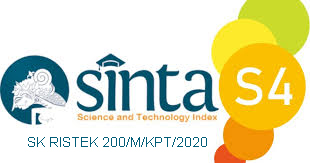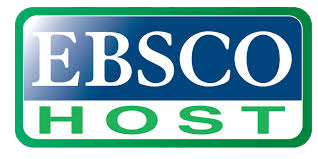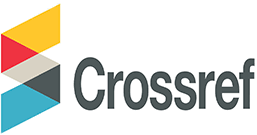Information System for Calculating Daily Sugar Limits in Consuming Web-Based Packaged Drinks Using the Prototype Method
Abstract
Keywords
Full Text:
PDFReferences
WHO, Guideline: sugars intake for adults and children. 2015.
M. T. Veronica, I. M. B. Ilmi, and Y. C. Octaria, “Kandungan Gula Sangat Tinggi dalam Minuman Teh Susu dengan Topping Boba.,” Amerta Nutrition, vol. 6, 2022, [Online]. Available: https://doi.org/10.20473/amnt.v6i1SP.2022.171-176
A. Asyfah, U. Usraleli, M. Magdalena, S. Sakhnan, and M. Melly, “Hubungan Obesitas dengan Kejadian Hipertensi di Wilayah Kerja Puskesmas Sidomulyo Rawat Inap,” Jurnal Ilmiah Universitas Batanghari Jambi, vol. 20, no. 2, pp. 338–343, 2020, [Online]. Available: http://dx.doi.org/10.33087/jiubj.v20i2.926
M. E. dr. Siti Nadia Tarmizi, “Cegah Meningkatnya Diabetes, Jangan Berlebihan Konsumsi Gula, Garam, Lemak ,” https://kemkes.go.id.
F. Ferretti and M. Mariani, “Sugar-sweetened beverage affordability and the prevalence of overweight and obesity in a cross section of countries,” Global Health, vol. 15, no. 1, Apr. 2019, doi: 10.1186/s12992-019-0474-x.
W. Widiastuti, A. Zulkarnaini, and G. Mahatma, “REVIEW ARTIKEL: PENGARUH POLA ASUPAN MAKANAN TERHADAP RESIKO PENYAKIT DIABETES,” Journal of Public Health Science, vol. 1, no. 2, pp. 108–125, 2024, [Online]. Available: https://doi.org/10.59407/jophs.v1i2.1066
R. Darianty, A. H. Qiu, and O. Barus, “Penerapan UCD dalam Aplikasi Tracking Kalori: OnTrack Solusi Kalori Seimbang,” Buletin Pagelaran Mahasiswa Nasional Bidang Teknologi Informasi dan Komunikasi, vol. 1, no. 1, pp. 6–10, 2023, [Online]. Available: https://buletingemastik.id/index.php/bg/article/view/3
U. M. Afif and S. Purnama, “Aplikasi Perhitungan Nilai Kalori Bahan Makanan Berbasis Anroid,” Journal of SPORT (Sport, Physical Education, Organization, Recreation, and Training), vol. 5, no. 2, 2021, [Online]. Available: https://doi.org/10.37058/sport.v5i2.2751
Y. W. A. Rustam and H. Gunawan, “Perancangan Aplikasi Perhitungan Kebutuhan Kalori Tubuh Harian Berdasarkan Asupan Konsumsi Makanan Menggunakan Logika Fuzzy,” INFORMASI (Jurnal Informatika dan Sistem Informasi), vol. 14, no. 2, pp. 94–109, 2022, [Online]. Available: https://doi.org/10.37424/informasi.v14i2.174
A. Dwi Suryani and Q. Jafar Ardian, “RANCANG BANGUN IDENTIFIKASI KEBUTUHAN KALORI DENGAN APLIKASI GO HEALTHY LIFE,” 2020. [Online]. Available: https://dx.doi.org/10.33365/jtsi.v1i1.51
A. F. Fahanani, I. Y. Habibie, and L. Kamajaya, “PENGEMBANGAN APLIKASI BOWLL UNTUK PERHITUNGAN KEBUTUHAN KALORI DENGAN METODE WATERFALL,” Jurnal Informatika Polinema, vol. 9, no. 1, pp. 103–110, 2022, [Online]. Available: https://doi.org/10.33795/jip.v9i1.1141
D. Wahyu Setiadi, I. Rizqillah Rajabi, and I. Adlil Dzil Ikram, “Rancang Aplikasi Penjualan Dengan Metode Prototype Berbasis Web,” vol. 2, no. 11, pp. 742–747, 2024, doi: 10.5281/zenodo.14482683.
M. D. Muffin, S. TSt Jeor, L. A. Hill, B. J. Scott, and S. A. Daugherty, “A new predictive equation for resting energy expenditure in healthy individuals 3,” 1990. [Online]. Available: https://doi.org/10.1093/ajcn/51.2.241
D. M. D. U. Putra, A. S. Kusuma, A. G. Willdahlia, and N. K. N. N. Pande, “Evaluasi Usability E-Modul Basis Data Menggunakan Metode System Usability Scale (SUS),” Jurnal Ilmiah Global Education, vol. 5, no. 2, pp. 1800–1809, Jun. 2024, doi: 10.55681/jige.v5i2.2764.
M. N. Adlini, A. H. Dinda, S. Yulinda, O. Chotimah, and S. J. Merliyana, “Metode penelitian kualitatif studi pustaka,” Jurnal Edumaspul, vol. 6, no. 1, pp. 974–980, 2022, [Online]. Available: https://digilib.uinsgd.ac.id/32855/1/Metode%20Penelitian%20Kualitatif.pdf
B. Arianto, Penyusunan State of The Art Penelitian. 2024.
P. Harumsari, H. Fikri, and H. Hannie, “RANCANG INTERFACE UI/UX E -LEARNING BERBASIS WEB MENGGUNAKAN METODE USER CENTERED DESIGN UNTUK MENINGKATKAN EFISIENSI KEGIATAN BELAJAR MENGAJAR: STUDI KASUS SDN PASIR KAMUNING II,” JATI (Jurnal Mahasiswa Teknik Informatika), vol. 8, pp. 10597–10607, Sep. 2024, doi: 10.36040/jati.v8i5.10960.
J. Brooke, “SUS: A quick and dirty usability scale,” Usability Eval. Ind., vol. 189, Nov. 1995.
Z. Sharfina and H. B. Santoso, “An Indonesian adaptation of the System Usability Scale (SUS),” in 2016 International Conference on Advanced Computer Science and Information Systems (ICACSIS), 2016, pp. 145–148. doi: 10.1109/ICACSIS.2016.7872776.
M. Firdaus and A. Pramono, “EVALUASI DAN PENGEMBANGAN DESAIN ANTARMUKA APLIKASI CATATMAK PENCATATAN KEUANGAN PRIBADI MENGGUNAKAN METODE USER CENTERED DESIGN,” JATI (Jurnal Mahasiswa Teknik Informatika), vol. 9, pp. 2173–2180, Mar. 2025, doi: 10.36040/jati.v9i2.12935.
DOI: https://doi.org/10.31326/jisa.v8i1.2201
Refbacks
- There are currently no refbacks.
Copyright (c) 2025 Galuh Panca Wirasa, Nur Chalik Azhar

This work is licensed under a Creative Commons Attribution-ShareAlike 4.0 International License.
JOURNAL IDENTITY
Journal Name: JISA (Jurnal Informatika dan Sains)
e-ISSN: 2614-8404, p-ISSN: 2776-3234
Publisher: Program Studi Teknik Informatika Universitas Trilogi
Publication Schedule: June and December
Language: English
APC: The Journal Charges Fees for Publishing
Indexing: EBSCO , DOAJ, Google Scholar, Arsip Relawan Jurnal Indonesia, Directory of Research Journals Indexing, Index Copernicus International, PKP Index, Science and Technology Index (SINTA, S4) , Garuda Index
OAI address: http://trilogi.ac.id/journal/ks/index.php/JISA/oai
Contact: jisa@trilogi.ac.id
Sponsored by: DOI – Digital Object Identifier Crossref, Universitas Trilogi
In Collaboration With: Indonesian Artificial Intelligent Ecosystem(IAIE), Relawan Jurnal Indonesia, Jurnal Teknologi dan Sistem Komputer (JTSiskom)
JISA (Jurnal Informatika dan Sains) is Published by Program Studi Teknik Informatika, Universitas Trilogi under Creative Commons Attribution-ShareAlike 4.0 International License.


















